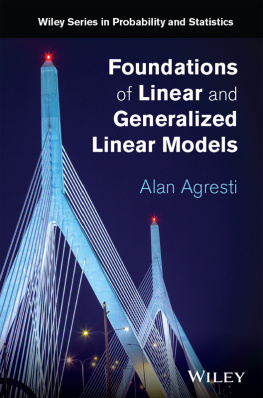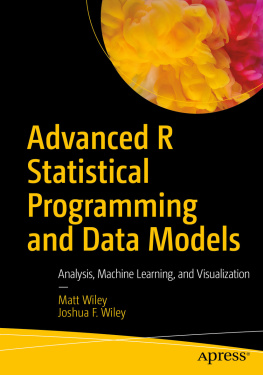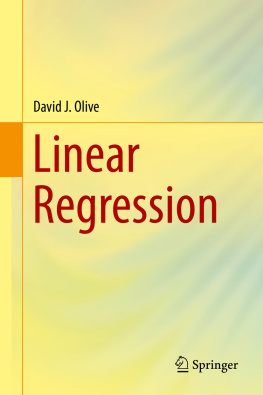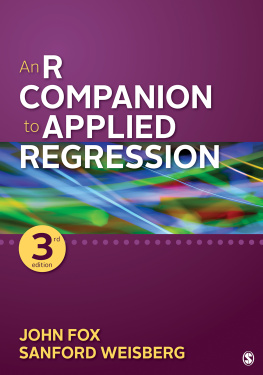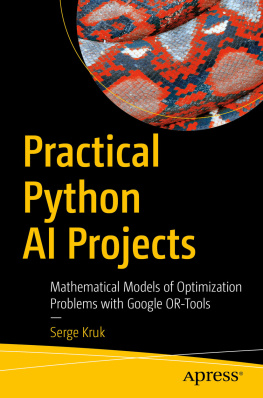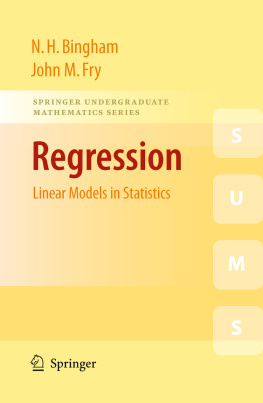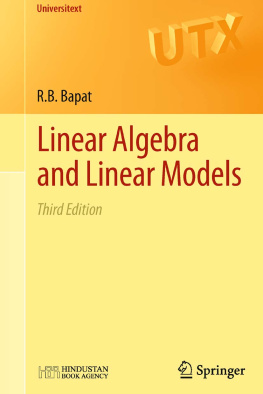
WILEY SERIES IN PROBABILITY AND STATISTICS
ESTABLISHED BY WALTER A. SHEWHART AND SAMUEL S. WILKS
Editors: David J. Balding, Noel A. C. Cressie, Garrett M. Fitzmaurice, Geof H. Givens, Harvey Goldstein, Geert Molenberghs, David W. Scott, Adrian F. M. Smith, Ruey S. Tsay, Sanford Weisberg
Editors Emeriti: J. Stuart Hunter, Iain M. Johnstone, Joseph B. Kadane, Jozef L. Teugels
A complete list of the titles in this series appears at the end of this volume.
Copyright 2015 by John Wiley & Sons, Inc. All rights reserved.
Published by John Wiley & Sons, Inc., Hoboken, New Jersey.
Published simultaneously in Canada.
No part of this publication may be reproduced, stored in a retrieval system, or transmitted in any form or by any means, electronic, mechanical, photocopying, recording, scanning, or otherwise, except as permitted under Section 107 or 108 of the 1976 United States Copyright Act, without either the prior written permission of the Publisher, or authorization through payment of the appropriate per-copy fee to the Copyright Clearance Center, Inc., 222 Rosewood Drive, Danvers, MA 01923, (978) 750-8400, fax (978) 750-4470, or on the web at www.copyright.com. Requests to the Publisher for permission should be addressed to the Permissions Department, John Wiley & Sons, Inc., 111 River Street, Hoboken, NJ 07030, (201) 748-6011, fax (201) 748-6008, or online at http://www.wiley.com/go/permission.
Limit of Liability/Disclaimer of Warranty: While the publisher and author have used their best efforts in preparing this book, they make no representations or warranties with respect to the accuracy or completeness of the contents of this book and specifically disclaim any implied warranties of merchantability or fitness for a particular purpose. No warranty may be created or extended by sales representatives or written sales materials. The advice and strategies contained herein may not be suitable for your situation. You should consult with a professional where appropriate. Neither the publisher nor author shall be liable for any loss of profit or any other commercial damages, including but not limited to special, incidental, consequential, or other damages.
For general information on our other products and services or for technical support, please contact our Customer Care Department within the United States at (800) 762-2974, outside the United States at (317) 572-3993 or fax (317) 572-4002.
Wiley also publishes its books in a variety of electronic formats. Some content that appears in print may not be available in electronic formats. For more information about Wiley products, visit our web site at www.wiley.com.
Library of Congress Cataloging-in-Publication Data
Agresti, Alan, author.
Foundations of linear and generalized linear models / Alan Agresti.
pages cm. (Wiley series in probability and statistics)
Includes bibliographical references and index.
ISBN 978-1-118-73003-4 (hardback)
1. Mathematical analysisFoundations. 2. Linear models (Statistics) I. Title.
QA299.8.A37 2015
003.74dc23
2014036543
To my statistician friends in Europe
Preface
PURPOSE OF THIS BOOK
Why yet another book on linear models? Over the years, a multitude of books have already been written about this well-traveled topic, many of which provide more comprehensive presentations of linear modeling than this one attempts. My book is intended to present an overview of the key ideas and foundational results of linear and generalized linear models. I believe this overview approach will be useful for students who lack the time in their program for a more detailed study of the topic. This situation is increasingly common in Statistics and Biostatistics departments. As courses are added on recent influential developments (such as big data, statistical learning, Monte Carlo methods, and application areas such as genetics and finance), programs struggle to keep room in their curriculum for courses that have traditionally been at the core of the field. Many departments no longer devote an entire year or more to courses about linear modeling.
Books such as those by Dobson and Barnett (2008), Fox (2008), and Madsen and Thyregod (2011) present fine overviews of both linear and generalized linear models. By contrast, my book has more emphasis on the theoretical foundationsshowing how linear model fitting projects the data onto a model vector subspace and how orthogonal decompositions of the data yield information about effects, deriving likelihood equations and likelihood-based inference, and providing extensive references for historical developments and new methodology. In doing so, my book has less emphasis than some other books on practical issues of data analysis, such as model selection and checking. However, each chapter contains at least one section that applies the models presented in that chapter to a dataset, using R software. The book is not intended to be a primer on R software or on the myriad details relevant to statistical practice, however, so these examples are relatively simple ones that merely convey the basic concepts and spirit of model building.
The presentation of linear models for continuous responses in Chapters 13 has a geometrical rather than an algebraic emphasis. More comprehensive books on linear models that use a geometrical approach are the ones by Christensen (2011) and by Seber and Lee (2003). The presentation of generalized linear models in Chapters 49 includes several sections that focus on discrete data. Some of this significantly abbreviates material from my book, Categorical Data Analysis (3rd ed., John Wiley & Sons, 2013). Broader overviews of generalized linear modeling include the classic book by McCullagh and Nelder (1989) and the more recent book by Aitkin et al. (2009). An excellent book on statistical modeling in an even more general sense is by Davison (2003).
USE AS A TEXTBOOK
This book can serve as a textbook for a one-semester or two-quarter course on linear and generalized linear models. It is intended for graduate students in the first or second year of Statistics and Biostatistics programs. It also can serve programs with a heavy focus on statistical modeling, such as econometrics and operations research. The book also should be useful to students in the social, biological, and environmental sciences who choose Statistics as their minor area of concentration.
As a prerequisite, the reader should be familiar with basic theory of statistics, such as presented by Casella and Berger (2001). Although not mandatory, it will be helpful if readers have at least some background in applied statistical modeling, including linear regression and ANOVA. I also assume some linear algebra background. In this book, I recall and briefly review fundamental statistical theory and matrix algebra results where they are used. This contrasts with the approach in many books on linear models of having several chapters on matrix algebra and distribution theory before presenting the main results on linear models. Readers wanting to improve their knowledge of matrix algebra can find on the Web (e.g., with a Google search of review of matrix algebra) overviews that provide more than enough background for reading this book. Also helpful as background for Chapters 13 on linear models are online lectures, such as the MIT linear algebra lectures by G. Strang at http://ocw.mit.edu/courses/mathematics on topics such as vector spaces, column space and null space, independence and a basis, inverses, orthogonality, projections and least squares, eigenvalues and eigenvectors, and symmetric and idempotent matrices. By not including separate chapters on matrix algebra and distribution theory, I hope instructors will be able to cover most of the book in a single semester or in a pair of quarters.
Next page
